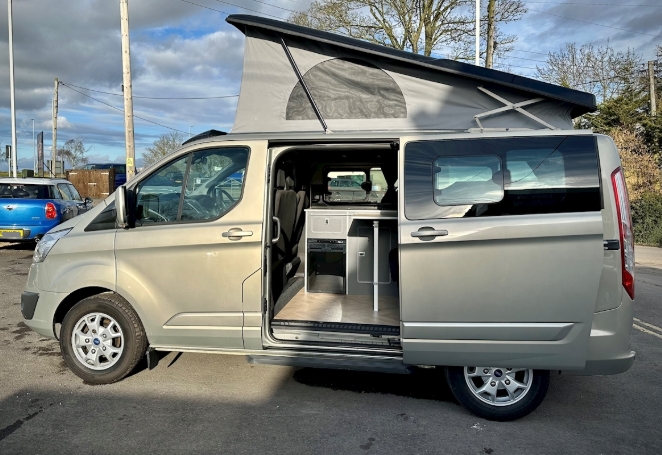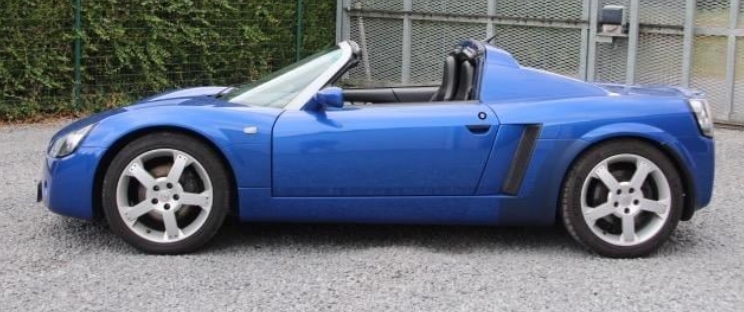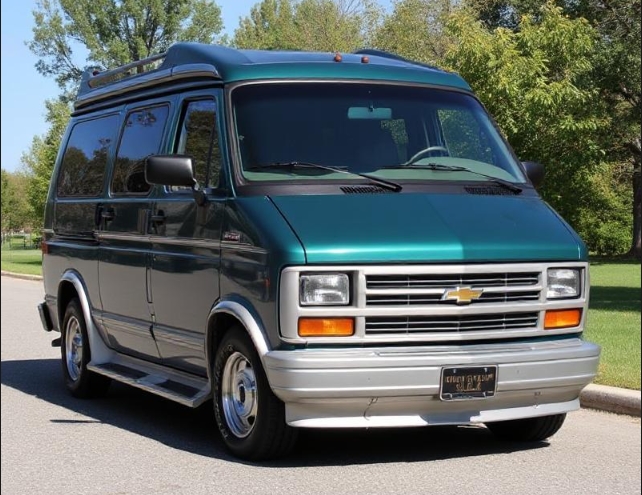From Workhorse to People-Mover: The Evolutionary Journey of the Ford Tourneo
In the vast and varied world of automotive nameplates, few have undergone as profound a transformation as the Ford Tourneo. What began as a simple, functional designation for a van with extra windows has blossomed into a sophisticated, multi-tiered family of vehicles, each tailored to a specific need but all united by a common DNA of space and practicality. The story of the Tourneo is not just about a single vehicle; it’s a reflection of the changing demands of families and businesses, mirroring the evolution of the people-mover from a basic utility box to a tech-laden, comfortable, and desirable mode of transport.
The Genesis: A Transit with Windows (Pre-1995)
To understand the Tourneo, one must first understand its legendary sibling: the Ford Transit. Since its debut in 1965, the Transit has been the backbone of commerce across Europe and beyond. From its earliest days, Ford offered minibus conversions of the Transit, catering to schools, taxi firms, and large families who needed to move more people than a conventional estate car could handle. These early models, however, were not branded as “Tourneo.” They were simply Transit Minibuses, and their character was overwhelmingly commercial. The ride was firm, the interiors were spartan, and sound insulation was a luxury rarely afforded. They were, in essence, workhorses first and people-carriers a distant second.
.
RepairSurge Online Repair Manuals Replace Bulky Books With Reliable Digital Information!
Faster And Cheaper Than Traditional Printed Manuals, Users Get Instant Access To The Repair Information They Need For Any Car, Truck, Van or SUV:
.
The First Generation: The Name is Born (1995-2000)
The “Tourneo” nameplate officially emerged in the mid-1990s, coinciding with a significant facelift of the second-generation Transit (often referred to by enthusiasts as the Mk3 or VE6/VE83 platform). The 1995 Ford Transit Tourneo was Ford’s first dedicated attempt to civilize its van, creating a more distinct passenger-focused variant.
While still fundamentally a Transit, the inaugural Tourneo featured several key upgrades. Externally, it sported body-colored bumpers on higher-spec models and more stylish wheel trims. Internally, the improvements were more significant. Full carpeting replaced rubber matting, the seats were upholstered in more comfortable, car-like materials, and additional soundproofing was added to reduce the cavernous echo typical of a van.
It was typically offered as an 8- or 9-seater, leveraging the Transit’s spacious interior. Trim levels were simple by today’s standards, often mirroring Ford’s car lineup of the era. A standard model provided the basics, while a higher-spec GLX version added creature comforts like electric front windows, central locking, and sometimes even air conditioning—a genuine luxury at the time. Despite these enhancements, its commercial roots were unmistakable, with a leaf-spring rear suspension that prioritised load-carrying over passenger comfort. It was a step in the right direction but remained a niche product for those who valued sheer space above all else.
The Second Generation: A Family Divided (2000-2013)
The year 2000 marked a pivotal moment. Ford launched an all-new, third-generation Transit, a ground-up redesign that brought with it a far more modern driving experience. This new platform served as the basis for the second-generation Tourneo, which represented a quantum leap in refinement. The new model offered improved crash safety, a more ergonomic, car-inspired dashboard, and better ride quality. It moved the Tourneo further away from its utilitarian origins and closer to the emerging MPV (Multi-Purpose Vehicle) market.
However, the most significant development of this era was the expansion of the Tourneo concept. In 2002, Ford introduced the Transit Connect, a smaller, Fiesta-based panel van designed for urban deliveries. With it came a passenger version destined to reshape the Tourneo family: the Ford Tourneo Connect.
1. Ford Tourneo (based on the full-size Transit, 2000-2013)
The full-fat Tourneo continued to offer seating for eight or nine people in various configurations. It was built on both short-wheelbase (SWB) and long-wheelbase (LWB) versions of the Transit, giving buyers a choice of interior space and manoeuvrability. A major facelift in 2006 further modernised the vehicle, introducing the bold new face of the Transit family and a completely redesigned interior that shared its switchgear and design language with Ford’s passenger cars like the Focus and Mondeo.
Trim levels became more defined during this period. Entry-level models were often badged simply as Tourneo, while mid-range Trend and high-spec Limited trims offered alloy wheels, climate control, cruise control, and more sophisticated audio systems. It was becoming a viable, if large, alternative to a traditional MPV for those with expansive needs.
2. Ford Tourneo Connect (2002-2013)
The Tourneo Connect carved out a new niche. It was a compact, high-roofed vehicle that offered seating for five with an enormous, versatile luggage area. Its sliding rear doors made it incredibly practical for families with young children, providing easy access in tight parking spaces. Based on the robust Transit Connect, it was durable and dependable, but with softer suspension settings to improve passenger comfort.
Early models were fairly basic, but as its popularity grew, Ford introduced more appealing trim levels. A base LX was joined by a GLX and later a lifestyle-oriented Zetec model, which added alloy wheels and sportier styling cues. The Tourneo Connect became a popular choice for families, taxi drivers, and mobility conversions, proving that the Tourneo formula could be successfully applied to a smaller platform.
The Third Generation: A Modern, Three-Tiered Family (2012-Present)
The period from 2012 onwards saw the most dramatic and ambitious evolution of the Tourneo brand. Ford split its commercial vehicle line-up and, in doing so, created a distinct, three-model Tourneo family, each vehicle based on a different van platform but all designed with a passenger-first philosophy.
1. Ford Tourneo Custom (2012-Present)
Replacing the full-size Transit-based Tourneo, the Tourneo Custom was a game-changer. It was based on the new one-ton Transit Custom van, a separate model line from the larger two-ton Transit. From its launch, the Tourneo Custom was engineered to feel less like a van and more like a luxury SUV. It was the first vehicle in its class to achieve a 5-star Euro NCAP safety rating, a testament to its advanced construction and safety features.
The interior was a revelation, featuring a stylish, driver-focused dashboard lifted from Ford’s car range. Its key innovation was its flexible rear seating. The seats could be folded, tumbled, or removed entirely, offering over 30 different seating and luggage configurations.
Trim levels reflected its upmarket ambitions:
- Trend: A well-equipped base model with features like Bluetooth, air conditioning, and cruise control.
- Limited: Added 16-inch alloy wheels, body-coloured mouldings, heated front seats, and front and rear parking sensors.
- Titanium: The luxury flagship, boasting full leather upholstery, satellite navigation, a rear-view camera, and stylish chrome exterior details.
- Sport (from 2017): A visually dynamic model with unique alloy wheels, sporty body stripes, and a partial leather interior, aimed at buyers wanting a more distinctive look.
- Titanium X (from 2019): Pushed the luxury even further with advanced features like Xenon headlights and premium leather.
- Active (from 2020): A rugged, SUV-inspired version with plastic body cladding, a unique grille, and an optional mechanical limited-slip differential for improved traction.
The Tourneo Custom also embraced modern powertrains, introducing EcoBlue diesel engines, mild-hybrid (mHEV) technology, and a pioneering Plug-In Hybrid (PHEV) version.
2. Ford Tourneo Connect (Second Generation, 2013-2022)
The second-generation Tourneo Connect was another huge leap forward. It shed the boxy, utilitarian look of its predecessor for a sleek, modern design featuring Ford’s Kinetic Design language. It was offered in two lengths: the standard five-seat Tourneo Connect and the longer, seven-seat Grand Tourneo Connect.
This model was praised for its car-like driving dynamics, excellent practicality, and high-quality interior. It was packed with clever features like overhead storage lockers and foldable passenger seats. Trim levels included Style, Zetec, and the range-topping Titanium, which could be specified with a panoramic glass roof, integrated infotainment system, and Active City Stop. An Active model was also added later in its lifecycle.
3. Ford Tourneo Courier (2014-Present)
Completing the new family was the smallest member, the Tourneo Courier. Based on the Fiesta-platform Transit Courier van, it was a supermini-sized MPV designed for urban life. Competing with cars like the Fiat Qubo, its compact dimensions made it easy to park, while twin sliding rear doors and a surprisingly spacious interior made it immensely practical for young families. Trim levels were typically Zetec and Titanium, offering a good level of equipment in a small, efficient package.
The Current Era: Partnerships and Electrification (2022-Onwards)
The most recent chapter in the Tourneo story is one defined by strategic alliances and the industry-wide shift to electrification.
In 2022, a brand-new, third-generation Tourneo Connect was launched. In a significant departure, this vehicle is not a pure Ford product but is instead the result of a partnership with Volkswagen, making it a rebadged and lightly restyled version of the Volkswagen Caddy MPV. While built by VW, it retains Ford’s trim hierarchy, including Titanium, Sport, and Active models, and is offered with modern petrol and diesel engines.
Meanwhile, the all-new Tourneo Custom, revealed for the 2023 model year, is a Ford-led design that pushes the model even further upmarket. It features a radical new design, a highly digital interior with a large SYNC 4 touchscreen, and an unprecedented range of powertrains. For the first time, a fully electric E-Tourneo Custom is available, offering zero-emission travel for up to nine people.
The smallest member, the Tourneo Courier, has also been redesigned for 2024, adopting a more robust, SUV-like aesthetic and will also be available as a fully electric E-Tourneo Courier, completing the electrification of the entire Tourneo family.
From a rudimentary Transit with windows to a sophisticated, three-model range offering petrol, diesel, hybrid, and fully electric options, the Ford Tourneo has perfectly tracked the evolution of personal transport. It has successfully shed its commercial skin to become a respected and desirable brand in its own right, proving that practicality and space need not come at the expense of comfort, technology, or style.







